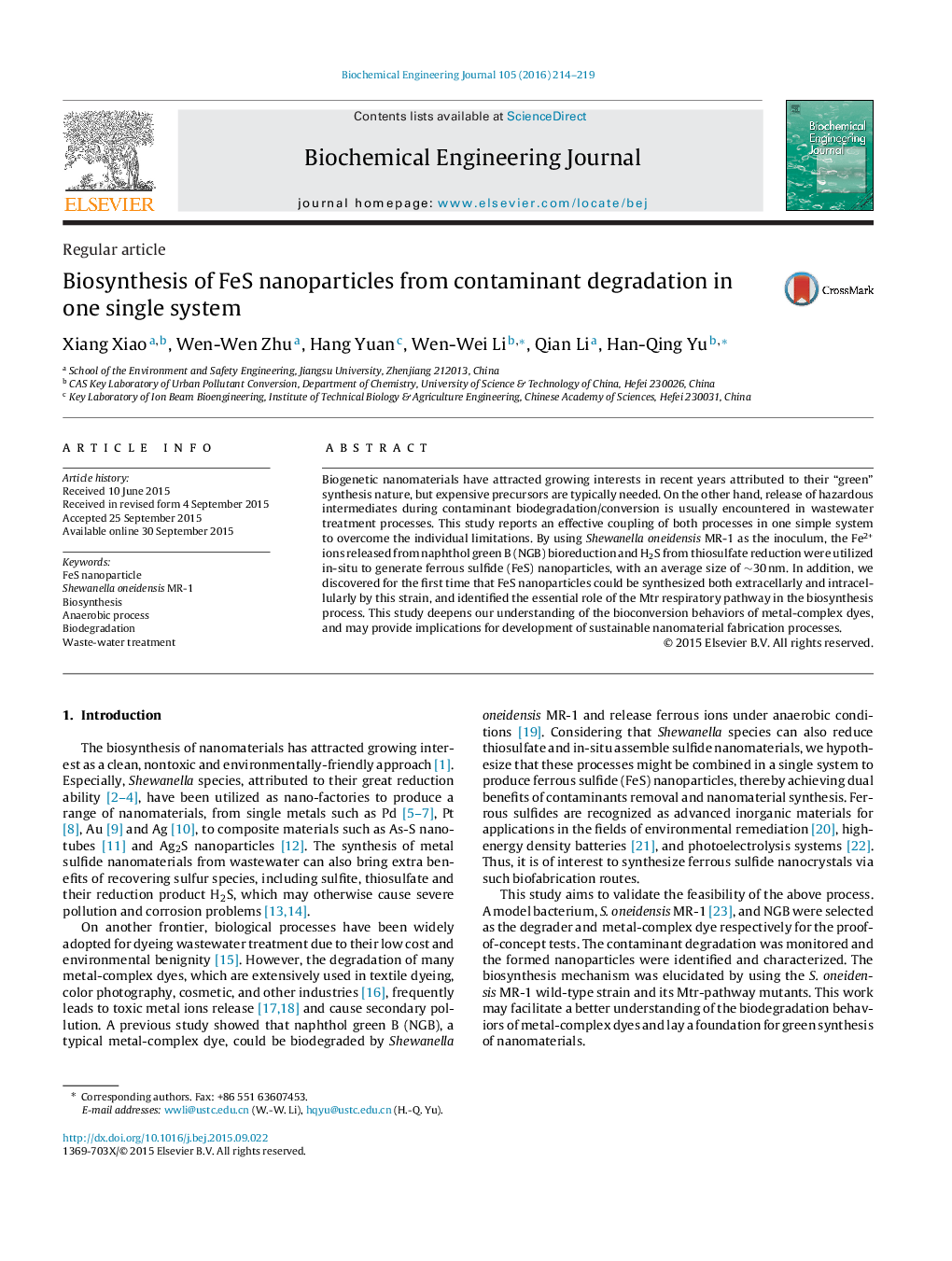| Article ID | Journal | Published Year | Pages | File Type |
|---|---|---|---|---|
| 2822 | Biochemical Engineering Journal | 2016 | 6 Pages |
•A novel approach coupling pollutant degradation and nanomaterial biosynthesis.•NGB and thiosulfate were efficiently reduced by Shewanella oneidensis MR-1.•The reduction products, Fe2+ and H2S, reacted to form FeS nanoparticles.•FeS nanoparticles were synthesized both extracellularly and at inside the cells.•Mtr respiratory pathway was essential in the biosynthesis process.
Biogenetic nanomaterials have attracted growing interests in recent years attributed to their “green” synthesis nature, but expensive precursors are typically needed. On the other hand, release of hazardous intermediates during contaminant biodegradation/conversion is usually encountered in wastewater treatment processes. This study reports an effective coupling of both processes in one simple system to overcome the individual limitations. By using Shewanella oneidensis MR-1 as the inoculum, the Fe2+ ions released from naphthol green B (NGB) bioreduction and H2S from thiosulfate reduction were utilized in-situ to generate ferrous sulfide (FeS) nanoparticles, with an average size of ∼30 nm. In addition, we discovered for the first time that FeS nanoparticles could be synthesized both extracellarly and intracellularly by this strain, and identified the essential role of the Mtr respiratory pathway in the biosynthesis process. This study deepens our understanding of the bioconversion behaviors of metal-complex dyes, and may provide implications for development of sustainable nanomaterial fabrication processes.
Graphical AbstractFigure optionsDownload full-size imageDownload as PowerPoint slide
